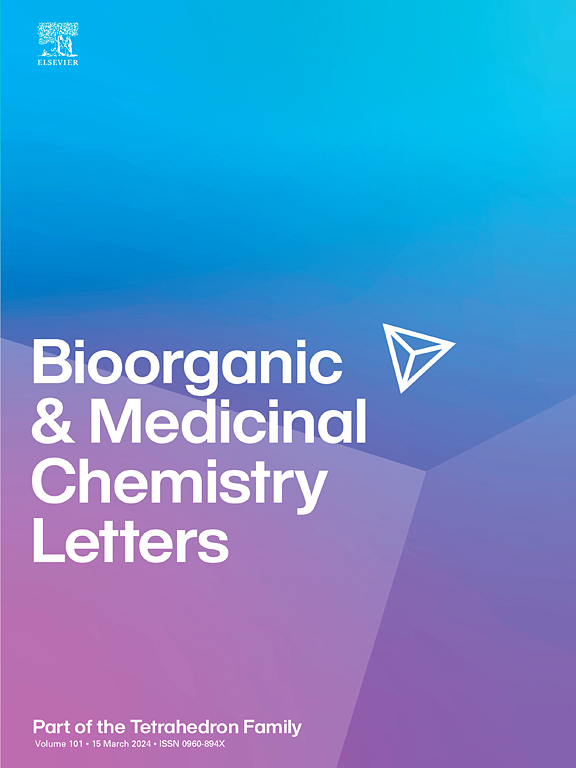Oxime functionalized Chalcones: Unveiling a new class of Chalcones with potent Antiplasmodial activity against blood-stages of Plasmodium falciparum in culture
IF 2.5
4区 医学
Q3 CHEMISTRY, MEDICINAL
引用次数: 0
Abstract
The Plasmodium falciparum parasite, which is responsible for malaria, has developed resistance to several first-line antimalarial drugs. To address this issue, researchers have been developing novel hybrid molecules that can inhibit parasite growth. In this study, a total of 38 chalcone oxime ethers, consisting of four different types, were evaluated for in vitro blood-stage antiplasmodial activity against P. falciparum (3D7) using SYBR green I assay. The four classes of oxime ethers showed promising to moderate antiplasmodial activity. At least one molecule from each class was potent, with the IC50 values of less than 5 μg/mL. Among the four classes, chalcone-chalconeoxime ethers (CCOE) were the most effective, with the IC50 values of 1.55 μg/mL and 1.4 μg/mL for CCOE-2 and CCOE-5, respectively. The most potent molecules, CKOE-13, COAE-2, CCOE-2, and CCOE-5, were tested against the chloroquine-resistant strain P. falciparum (INDO) exhibited IC50 values of less than 5 μg/mL. Notably, the most potent molecules did not induce hemolysis at concentrations up to 50 μg/mL. These findings highlight a new class of chalconeoxime ethers as potent antiplasmodial agents, warranting further exploration of their biological activities.

肟功能化查尔酮:揭示一类新的查尔酮对培养的恶性疟原虫血液阶段具有有效的抗疟原虫活性。
导致疟疾的恶性疟原虫已经对几种一线抗疟疾药物产生了耐药性。为了解决这个问题,研究人员一直在开发能够抑制寄生虫生长的新型杂交分子。采用4种不同类型的38种查尔酮肟醚进行恶性疟原虫血期体外抗疟原虫试验(3D7)。这四类肟醚显示出适度的抗疟原虫活性。每一类中至少有一个分子是有效的,IC50值小于5 μg/mL。四类化合物中,查尔酮-查尔肟醚(CCOE)的IC50值为1.55 μg/mL, CCOE-2和CCOE-5的IC50值分别为1.4 μg/mL。ccoe -13、COAE-2、CCOE-2和CCOE-5对耐氯喹的恶性疟原虫(INDO)的IC50值均小于5 μg/mL。值得注意的是,最有效的分子在浓度高达25 μg/mL时不会诱导溶血。这些发现突出了一类新的查尔康肟醚作为有效的抗疟原虫药物,值得进一步探索其生物活性。
本文章由计算机程序翻译,如有差异,请以英文原文为准。
求助全文
约1分钟内获得全文
求助全文
来源期刊
CiteScore
5.70
自引率
3.70%
发文量
463
审稿时长
27 days
期刊介绍:
Bioorganic & Medicinal Chemistry Letters presents preliminary experimental or theoretical research results of outstanding significance and timeliness on all aspects of science at the interface of chemistry and biology and on major advances in drug design and development. The journal publishes articles in the form of communications reporting experimental or theoretical results of special interest, and strives to provide maximum dissemination to a large, international audience.

 求助内容:
求助内容: 应助结果提醒方式:
应助结果提醒方式:


